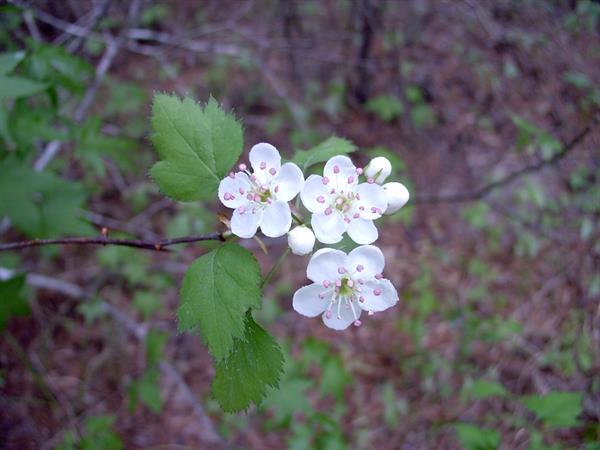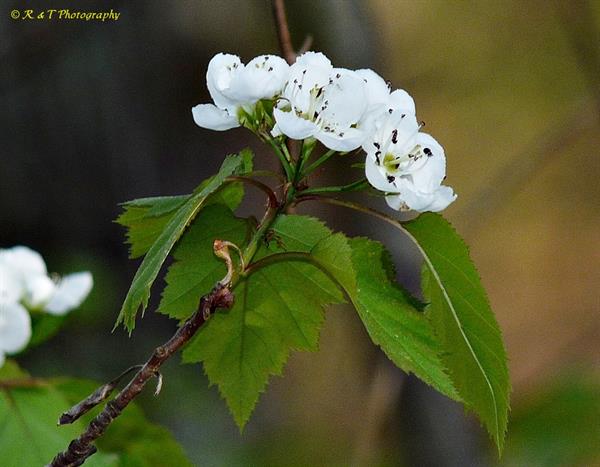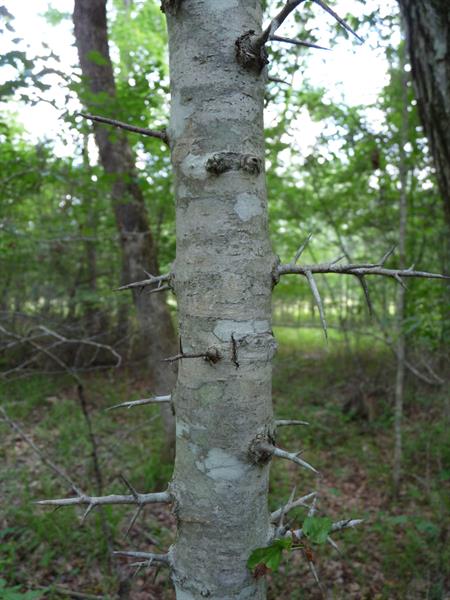
Origin/Endemic status: Endemic
Taxonomy Comments: C. iracunda and its associated, allied taxa suggest a complex possibly derived as hybrids involving series Tenuifoliae and Pruinosae, all formerly included within series Silvicolae (F, G). Recent reassignment by Phipps (FNA9) suggests separation of taxa in this complex into series Populneae and Tenuifoliae. The southern forms of the iracunda complex tend to occasionally display sparse hairs or pubescence on the foliage and inflorescence stems, here attributed to the typical var. iracunda; the more glabrous northern forms to var. populnea. C. iracunda Beadle sensu stricto is morphologically similar to the more widespread species C. macrosperma Ashe and separation of sterile and juvenile plants in sympatric ranges can be problematic; a primary distinction of hard fruit flesh in C. iracunda and soft fruit flesh in C. macrosperma is not always available for comparison.
Synonymy: = Lance (2014); = Crataegus iracunda Beadle – K1, Tn, Lance (2014); > Crataegus drymophila Sarg.; < Crataegus flabellata (Bosc ex Spach) K.Koch – C, RAB; > Crataegus iracunda Beadle – FNA9, S13; > Crataegus iracunda Beadle var. iracunda – F, G; > Crataegus iracunda Beadle var. silvicola (Beadle) E.J.Palmer – F, G; > Crataegus populnea Ashe – G; > Crataegus riparia Ashe; > Crataegus sectilis Ashe; > Crataegus shallotte Ashe; > Crataegus silvicola Beadle – S13
Heliophily: 6
Hover over a shape, letter, icon, or arrow on the map for definition or see the legend.
 © Richard & Teresa Ware CC-BY-NC, permission granted to NCBG | Original Image ⭷
© Richard & Teresa Ware CC-BY-NC, permission granted to NCBG | Original Image ⭷ © Richard & Teresa Ware CC-BY-NC, permission granted to NCBG | Original Image ⭷
© Richard & Teresa Ware CC-BY-NC, permission granted to NCBG | Original Image ⭷ © Richard & Teresa Ware CC-BY-NC, permission granted to NCBG | Original Image ⭷
© Richard & Teresa Ware CC-BY-NC, permission granted to NCBG | Original Image ⭷ © Richard & Teresa Ware CC-BY-NC, permission granted to NCBG | Original Image ⭷
© Richard & Teresa Ware CC-BY-NC, permission granted to NCBG | Original Image ⭷Feedback
See something wrong or missing on about Crataegus iracunda var. iracunda? Let us know here: (Please include your name and email if at all complicated so we can clarify if needed.)
Cite as...